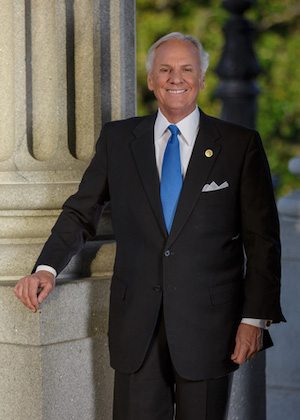Gov. McMaster, SCDHHS Announce Number of School-based Mental Health Counselors Doubles in South Carolina
January 26, 2024Governor Henry McMaster and the South Carolina Department of Health and Human Services (SCDHHS) today announced significant progress in the number of school-based mental health counselors available to serve South Carolina children. According to September 2023 survey results of South Carolina school districts, the number of school-based mental health counselors doubled to 1,209 at the start of the 2023-2024 school year from 600 in January 2022. This progress occurs less than two years after Governor Henry McMaster directed SCDHHS to review the state’s public school mental health services program in his 2022 State of the State address and through Executive Order 2022-02.
“In just the past two years, we have made significant progress in providing school-based mental health services to school-aged children,” said Governor McMaster. “With an ongoing mental health crisis, especially among our young people, it is critical that we continue to build upon these efforts and ensure mental health resources are available and accessible to our state’s children.”
SCDHHS’ review found that in January 2022 the state had a mental health counselor-to-student ratio of only 1:1,300 and approximately 60% of mental health counselors available in South Carolina schools were employed by the state’s Department of Mental Health. In response to these findings, SCDHHS Director Robby Kerr made seven recommendations to improve access to mental health services in South Carolina’s public schools, with a goal of cutting the state’s mental health counselor-to-student ratio in half by 2023. SCDHHS implemented the recommendations July 1, 2022. The recommendations included increasing reimbursement rates school-based mental health counselors received through the state’s Healthy Connections Medicaid program and providing greater flexibility in how districts hire or contract with mental health providers.
The September 2023 survey showed the mental health counselor-to-student ratio had improved to approximately 1:653 and most of the state’s school-based mental health counselors were now employed directly by a school district. The survey also showed mental health counselors are now available in 230 more schools than in January 2022 and are available in every school district in the state.
“This tremendous progress in improving access to vital services for our state’s children was achieved by adopting a collaborative approach between state agencies, local school districts and the private sector,” said SCDHHS Director Kerr. “The emphasis on providing these services through our public schools is important as research from the South Carolina School Behavioral Health Academy shows children are 21 times more likely to access a mental health service through a school than in another setting.”
A summary of the survey results is available here. In addition to the policy recommendations implemented July 1, 2022, SCDHHS announced a $3.2 million grant to support the South Carolina School Behavioral Health Academy in September 2022. More information about SCDHHS’ school-based mental health services initiative is available on the agency’s website.
Key Youth Behavioral Health Statistics
- According to a recent report from the Boston Consulting Group, 77% of youth in South Carolina with a major depressive episode do not receive any mental health treatment. This is well above the national average of 60%.
- According to the Centers for Disease Control and Prevention, youth suicide has increased significantly from 2007 through 2021. Suicide rates for Americans ages 10 to 24 rose 62%.
- Nationally, the number of mental health visits in pediatric emergency departments increased from 7.7% of all encounters in 2011 to 13.1% in 2020.
- According to the South Carolina School Behavioral Health Academy, children are 21 times more likely to access mental health services in schools than in any other setting.
- In 2021, national data indicates 30% of female high school students seriously considered suicide, an increase from 24.1% in 2019, according to the CDC.
- In 2021, national data indicates 13.3% of female high school students attempted suicide, an increase from 11% in 2019, according to the CDC.
- High school students with depression are more than twice as likely to drop out than their peers.
- Suicide is the third leading cause of death for South Carolinians between ages 10-14.
- Suicide is the fourth leading cause of death for South Carolinians between ages 15-17.



















